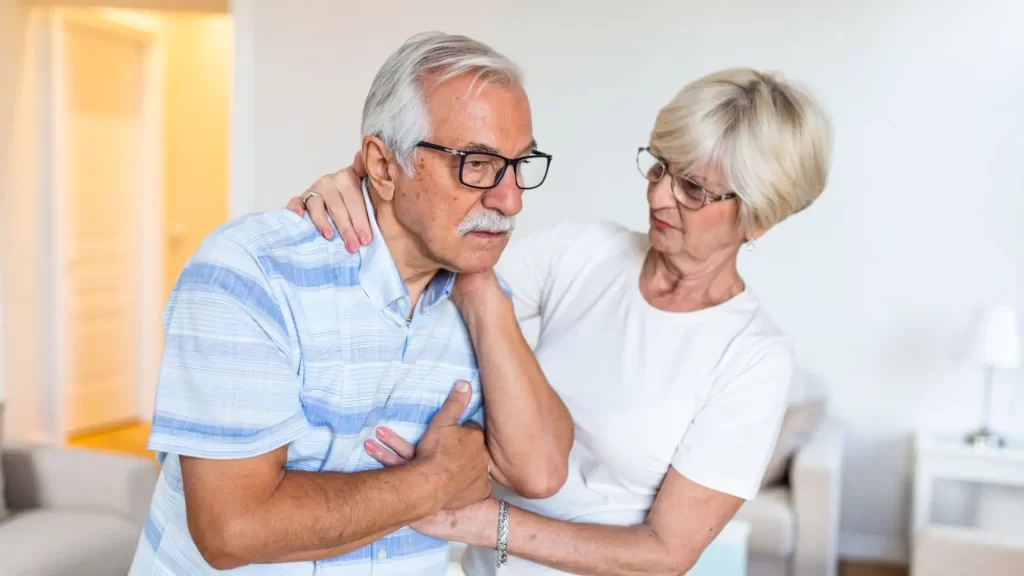Training and Assessment Delivered on Behalf of Allens Training Pty Ltd RTO 90909
Is it a Stroke? Here’s What to Know
If you know what to do in the event of someone having a stroke you can save their life and help them to have better odds of recovery. In Australia, someone has a stroke every 19 minutes. Today, I’ll be walking you through the first aid steps to follow if someone has a stroke. Having this knowledge could make all the difference if and when it happens.
What is a Stroke?
Let’s start by understanding what a stroke actually is. When someone has a stroke, put simply, the supply of blood to a part of the brain is disrupted. Without the blood supply, the surrounding brain cells get start to deteriorate and eventually die.
What causes an interruption to the brains blood flow? It could be a blood clot or a ruptured artery. So what does this mean for you and I as first aiders?
How To Identify a Stroke
Time is of the essence. The quicker a person who has a stroke receives treatment, the better. If a person is treated more brain cells will survive. So how can you pick up that someone is having a stroke early?
There’s a simple acronym that can help you to tell: F.A.S.T
What does Fast stand for?
- Facial weakness – ask the person to smile. Is their mouth droopy on one side?
- Arm weakness – ask the person raise both arms. Can they only raise one arm or is one arm weaker?
- Speech difficulty – ask the person to repeat a phrase. Is their speech slurred and can they understand what you say?
- Time to act fast (Take Action) – if any of these signs are present send for an ambulance immediately
Here are a few other stroke symptoms someone may have.
- difficulty swallowing
- Numb feeling in the arm face or leg.
- losing balance and falling
- changes in vision like blurriness or loss of vision in one or both eyes
- A severe sudden headache
- Feeling drowsy or confused
Emergency Services

Using fast will help you to quickly determine a stroke. If you suspect someone is having a stroke it’s best to call an ambulance rather than take a person in yourself. Why? Paramedics can start managing the situation. They can take a person to the best hospital in your area to handle strokes. They can notify the hospital that a stroke patient is coming so that treatment can start earlier.
What might you need to do while waiting for an ambulance?
Here are four situations you might face.
- The person is unresponsive and not breathing. In this case, things are bad. You’ll need to follow the DRSABCD action plan and commence CPR.
- The person is unconscious but they are breathing Lay them on their side and make sure their airways are clear.
- The person is conscious Help them to get comfortable until emergency help arrives. The Australian Stroke Foundation suggests laying them down on their side with their head slightly raised and supported and clothing loosened to reduce breathing difficulties. such as loosening clothing
- The person wants water or food Their swallowing can be impaired so it’s best not to give them water or food. Even worse, water and food could interfere with the lifesaving treatment they need.
Take Strokes Seriously
Before we mentioned that blood clots can cause strokes. In at least 30 percent of cases though, before the body has a major blood clot, it will have a minor blood clot that quickly clears itself. When this happens a person will have stroke like symptoms. Mostly though, these symptoms will be gone within an hour.
It’s important when this happens to seek medical attention quickly. It’s a fair indication that a more serious stroke could come soon. So don’t hesitate to call emergency services.

Conclusion
So, be sure to learn the warning signs of stroke. Remember F.A.S.T and if you think a friend or family member has these symptoms, call 000 immediately. If you act quickly, you can help save a life and prevent disability.


